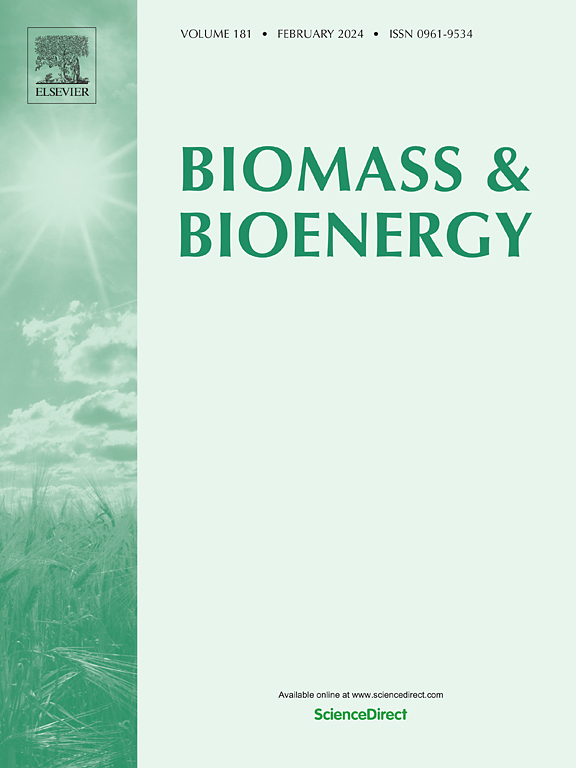竹芋淀粉增强竹芋纳米晶纤维素生物聚合物纳米复合膜的力学、物理和形态特性
IF 5.8
2区 生物学
Q1 AGRICULTURAL ENGINEERING
引用次数: 0
摘要
广泛的研究系统地揭示了纳米纤维素融入各种淀粉基植物基质的关键机制。本研究旨在研究纳米纤维素增强竹粉纳米晶纤维素(AS/ANCC)生物聚合物纳米复合材料的力学、物理和形态特性。采用浓度为55%的硫酸,采用酸水解法提取竹根纳米纤维素ANCC。以30%甘油和山梨醇为增塑剂,采用溶液浇铸法制备不同ANCC(0、1、3、5和10% wt)负荷的竹芋淀粉(AS)生物聚合物薄膜。ANCC的掺入持续增加薄膜厚度和密度,表明填充效应。由于ANCC的亲水性,吸水性能随其含量的增加而增加。从力学角度来看,ANCC显著提高了抗拉强度和断裂伸长率,最佳加载为3%,但同时降低了杨氏模量。热稳定性方面,TGA结果表明,随着ANCC负荷的增加,虽然主要降解的开始时间可能会略有减少,但炭产率显著增加,表明通过炭的形成提高了热稳定性。化学分析(FTIR, Raman)证实了ANCC的成功整合及其对分子结构的影响,XRD数据也证实了ANCC含量越高结晶度越高。总的来说,ANCC的加入显著增强了AS膜,提高了生物聚合物纳米复合膜的机械强度、柔韧性和热稳定性。本文章由计算机程序翻译,如有差异,请以英文原文为准。
Mechanical, physical and morphological properties of arrowroot starch reinforced arrowroot nanocrystalline cellulose biopolymer nanocomposites film
Extensive studies have systematically uncovered the key mechanisms by which nanocellulose integrates into various starch-based botanical matrices. This research aims to investigate the mechanical, physical, and morphological properties of nanocellulose arrowroot starch reinforced arrowroot nanocrystalline cellulose (AS/ANCC) biopolymer nanocomposites. The extraction of arrowroot nanocellulose ANCC was done by acid hydrolysis method using sulfuric acid with a concentration of 55 %. The solution casting method was performed to prepare the arrowroot starch (AS) biopolymer film with different ANCC loadings of (0,1,3, 5 and 10 %wt) utilizing a combined 30 % glycerol and sorbitol as a plasticizer. The incorporation of ANCC consistently increased film thickness and density, indicating a filler effect. Water absorption behavior varied, generally increasing with ANCC content due to its hydrophilic nature. Mechanically, ANCC significantly enhanced both tensile strength and elongation at break, with an optimal loading observed at 3 %, though it concurrently reduced Young's Modulus. Thermally, TGA results showed that while the onset of main degradation might slightly decrease, char yield significantly increased with higher ANCC loadings, indicating improved thermal stability through char formation. Chemical analyses (FTIR, Raman) confirmed ANCC's successful integration and its influence on molecular structure, supported by XRD data revealing increasing crystallinity with higher ANCC content. Overall, the incorporation of ANCC significantly enhanced AS films, offering improved mechanical strength, flexibility, and thermal stability of the biopolymer nanocomposite films.
求助全文
通过发布文献求助,成功后即可免费获取论文全文。
去求助
来源期刊

Biomass & Bioenergy
工程技术-能源与燃料
CiteScore
11.50
自引率
3.30%
发文量
258
审稿时长
60 days
期刊介绍:
Biomass & Bioenergy is an international journal publishing original research papers and short communications, review articles and case studies on biological resources, chemical and biological processes, and biomass products for new renewable sources of energy and materials.
The scope of the journal extends to the environmental, management and economic aspects of biomass and bioenergy.
Key areas covered by the journal:
• Biomass: sources, energy crop production processes, genetic improvements, composition. Please note that research on these biomass subjects must be linked directly to bioenergy generation.
• Biological Residues: residues/rests from agricultural production, forestry and plantations (palm, sugar etc), processing industries, and municipal sources (MSW). Papers on the use of biomass residues through innovative processes/technological novelty and/or consideration of feedstock/system sustainability (or unsustainability) are welcomed. However waste treatment processes and pollution control or mitigation which are only tangentially related to bioenergy are not in the scope of the journal, as they are more suited to publications in the environmental arena. Papers that describe conventional waste streams (ie well described in existing literature) that do not empirically address ''new'' added value from the process are not suitable for submission to the journal.
• Bioenergy Processes: fermentations, thermochemical conversions, liquid and gaseous fuels, and petrochemical substitutes
• Bioenergy Utilization: direct combustion, gasification, electricity production, chemical processes, and by-product remediation
• Biomass and the Environment: carbon cycle, the net energy efficiency of bioenergy systems, assessment of sustainability, and biodiversity issues.
 求助内容:
求助内容: 应助结果提醒方式:
应助结果提醒方式:


